This post may contain affiliate links. If you make a purchase through a link, I may receive a small commission, at no cost to you. These commissions help keep this website up and running, and I thank you for your support. Read my full disclosure here.
We spent eight days in Cornwall as part of our two week holiday exploring Dorset, Devon, Cornwall and Somerset. We were extremely lucky to visit during some of the hottest days of the year, with beautiful clear blue skies everyday. This is a very looong post because there is just so much to see and do in beautiful Cornwall. We could easily have spent much longer here. Highlights include stunning turquoise beaches, historic sites, quaint coastal fishing villages and famous breathtaking landmarks, including Lands End and Lizard Point.
Money Saving Tip
- Lots of sites, attractions, and parking in Cornwall are owned by the National Trust. To save money, consider purchasing a National Trust membership.
Day 1: Tamar Valley and Mevagissey
- Staying in: Mevagissey
We started our morning in the beautiful Dartmoor National Park in Devon, and drove onto the Tamar Valley, which sits on the borders of Devon and Cornwall. Because of its historic mining, this area is a World Heritage site. It’s also an Area of Outstanding Natural Beauty, so it was a beautiful drive through the countryside. Our first stop on the Cornwall side of the River Tamar was the National Trust property of Cotehele (Saltash, St Dominick PL12 6TA). Cotehele is a huge property with lots to explore, including a large fortified Tudor manor house, garden, quay, and working millhouse.
When we arrived it was mid-morning and already hot, it was going to be a scorcher. We decided to start our visit exploring the old house and found that they were having an ‘open day’ which meant that the doors usually closed to the public were open. That included offices and storage areas, which provided an interesting ‘behind the scenes’ experience. The house was originally built in medieval times but was extended during Tudor times. Some of the property is in such an original state that it doesn’t even have electricity. The house was a rabbit warren of rooms with tiny hidden staircases, we felt like explorers.
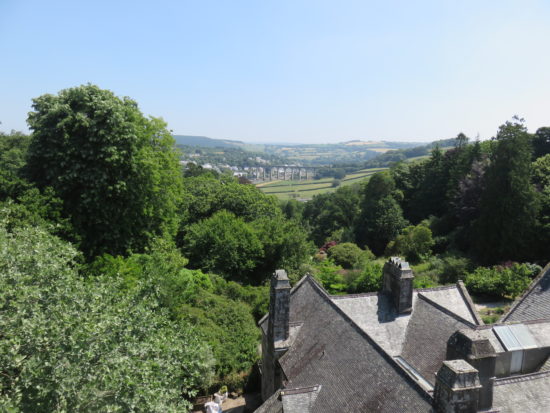
We were surprised to come across a Bengal cat who was quite at home amongst the antiques. Apparently, he helps keep the vermin at bay. One of the highlights of the house was getting the chance to ascend a very narrow, steep staircase (not for the faint hearted) to get onto the roof of the house, where we were rewarded with breathtaking views of the property and the valley, including the Calstock Viaduct, which was built in the early 1900s. On our way out, we also visited the buildings off the courtyard, one of which had an interesting hidden room.
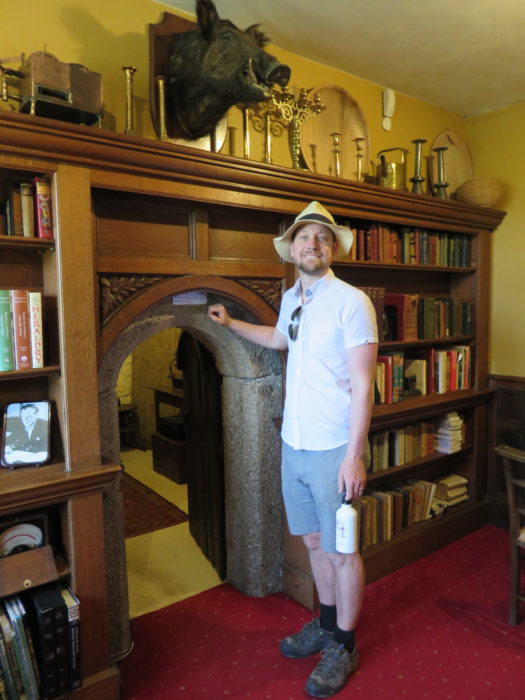
After a quick lunch at the onsite cafe, we explored the vast garden. We started with the very pretty formal terraced garden around the house, then the upper garden with its cut flower garden and large pond filled with water lilies. We then headed down along the Valley Garden, which took us to a path that looped around to the historic quay where they run boat trips along the River Tamar. There’s also a tea room here. We continued to walk for about 10 minutes through a lovely, cool woodland to visit the old water-powered mill, which they run on Thursdays and Sundays. Whilst we visited, they had a baking demonstration where they were using the flour they produce, which they also sell onsite.
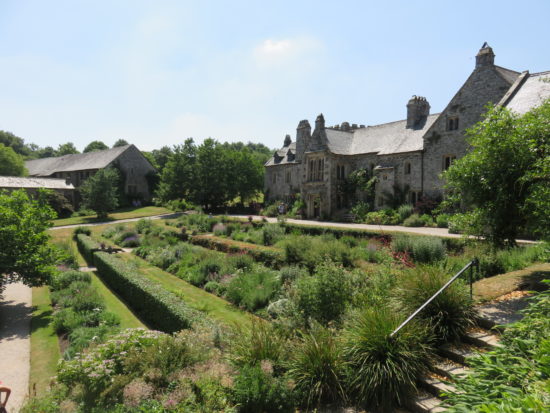
This is a huge property, and we spent nearly 4 hours exploring it, but could have stayed even longer. In the afternoon, we drove on to visit another National Trust property, Lanhydrock house and gardens (Treffry Ln, Bodmin PL30 5AD). The original home was lost to a fire in 1881 and was rebuilt in the Victorian style with all the modern conveniences of the time, including kitchen ovens and central heating. The house is huge and luxurious, and the family is obviously very wealthy. The final family that lived here was very large, with 10 children. But sadly, affected by the war, the family of ten only produced one heir. After exploring the house, we headed outside to visit the garden and St Hydroc Church.
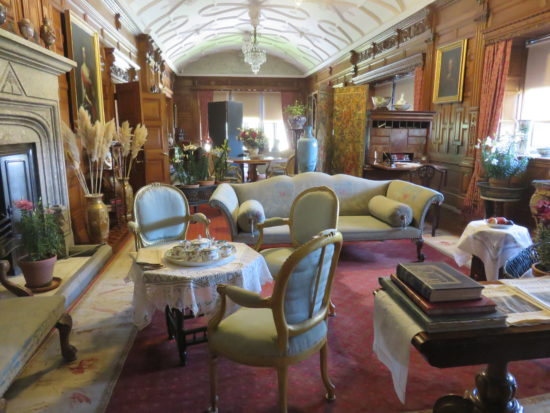
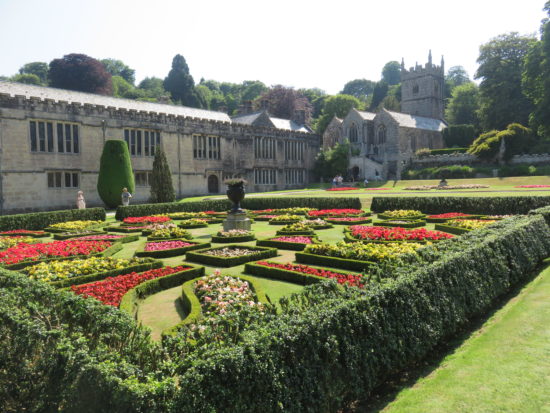
In the evening, we drove to our final destination for the day, the Cornish coastal fishing village of Mevagissey. The road to the town was fine, but in order to get to our accommodation, we had to drive through the middle of town, which was just a very narrow lane. Everybody had to press themselves against the buildings so we could get through! Thankfully, we made it safely to our accommodation.
It was a lovely warm evening, so we bought our first Cornish pasty from The Cornish Bakery (1-2 Olivers Quay, Mevagissey, Saint Austell PL26 6UA), a chain which sells a range of yummy pasties as well as baked goods. We visited this place several times during our holiday in Cornwall. Did you know that they can only be legally called a Cornish pasty if they were made in Cornwall? We ate our delicious Cornish pasties on the harbour front and then ate our first Cornish ice cream from Roskilly’s (Mevagissey, Saint Austell PL26 6UA), also on the harbour. It was oh so creamy, just the way I like it.

Other Optional Activities
If you have time, or don’t want to visit the National Trust properties I visited, then there are other popular sites to visit. We decided not to visit the Eden Project this time since it is really expensive and I knew it would be very busy and hot at this time of year, but we do hope to get back there one day.
- Lost Garden of Heligan (Pentewan, St Austell PL26 6EN, England)
- Eden Project (Bodelva PL24 2SG, England)
Day 2: Mevagissey and the Roseland Heritage Coastline Peninsula
- Staying in: Mevagissey
In the morning, we headed out early to explore the nearby Roseland Heritage Coastline Peninsula. We drove down to the National Trust car park in Penare by the Dodman Point coastal path. The car park isn’t manned and relies on an honesty box system (but is free for members). The road to the car park was very narrow, but thankfully quiet. The car park was quite large, and there were helpful signs directing how to get onto the coastal path. We decided to take the path out to Dodman Point to see the huge granite cross, which was placed there in 1896 as a navigational aid to seafarers.
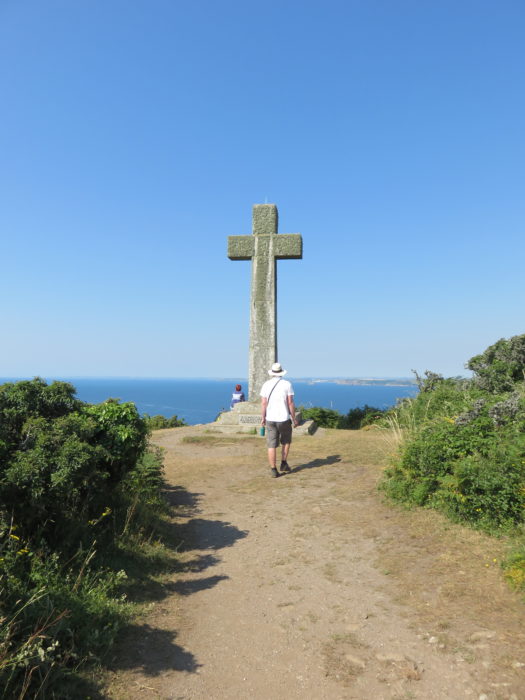

We continued around the Dodman Long Loop (see map and instructions on the National Trust website), which took us past Vault Beach and onto Gorran Haven, where there is a little Coast Path Cafe (S W Coast Path, Gorran Haven PL26, England), and back again. Overall, it took us about 3 hours, and the views were stunning. We came across some ponies that looked a lot like the Dartmoor breed, grazing along the paths. One adorable pony decided to follow us for part of the way. It was another flawless sunny day, so by the end of it, we were rather hot and bothered so we walked down to the nearby Hemmick beach. It is a small beach with only enough parking for four cars, so if it is full, then park up at the National Trust car park and walk down. Be aware that there are no facilities, toilets or food here.
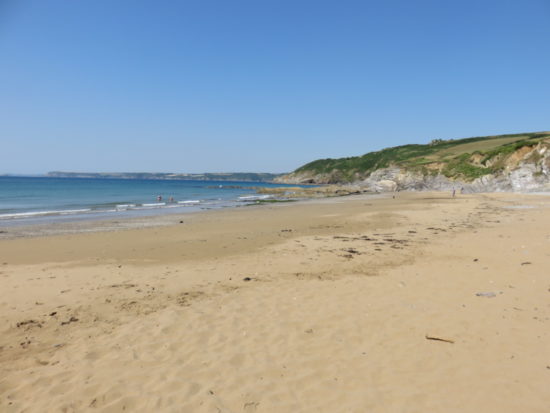
It was so quiet, with only a few other people there. After cooling off in the water, the tide was out, so we walked further down the beach, making our way through a maze of tall rocks. You need to be careful not to get caught out by the incoming tide. We really enjoyed just chilling and relaxing at this peaceful beach.
Tip
- To get back to the National Trust car park, there is a more direct and less steep path that runs to the left as you return up the cliff rather than going back around the cliff edge.
On the way back to Mevagissey, we stopped in at Boddingtons (The Ashes, Tregoney Hill, Mevagissey PL26 6RQ), a strawberry farm which was only a short distance from our accommodation. They allow you to pick your own, or you can buy pre-picked cartons as well as their range of jams. We decided to pick our own so we headed out to the patch we were directed to. The farm was in a beautiful spot, on the hill above Mevagissey and overlooking the ocean. The views were fantastic and the strawberries were big, red, super juicy and sweet. This was the best pick your own I’ve ever been to. The strawberries were plentiful so it took us only a few minutes to pick a large punnet, and it only cost us £2!

In the afternoon, we walked down to Mevagissey, where my hubby enjoyed his first official Cornish cream tea at She Sells (East Quay, Mevagissey PL26 6QQ, England), a trendy cafe on East Quay with a small shop selling souvenirs. Of course, these are just your usual cream teas which we have eaten many times whilst living in the UK, but now we were actually eating them in Cornwall, where clotted cream comes from. What’s clotted cream you ask? I know, it sounds awful and makes me think of clotted blood, but it is actually cream that has been slowly cooked down on a low heat to become very thick and concentrated. There is always the debate in England about which goes on the scone first, the cream or the jam? Well, usually if it is fresh whipped cream, it is easier to blob it on top of the jam, but with clotted cream you need to spread it on like butter, so it’s easier to put it on first and then drop the jam on top… I know this statement will be controversial to the British readers. I ended up having a really rich, moist chocolate and raspberry loaf with a milkshake.
In an attempt to walk off some of our calories, we walked over to the next village, Portmellon. It is much quieter here, with just an average pub and not much else. We stopped to have a drink and sat out in the scorching sun looking over the harbour. Eventually, we headed back to our accommodation for an afternoon nap before returning to Mevagissey town centre in the evening to enjoy a crab sandwich for dinner from the seafood caravan on the harbour. The sandwiches were huge and packed with flaked chunks of fresh crab.
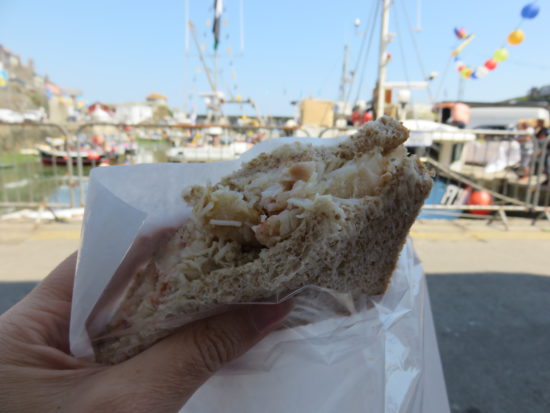
The town was hosting a week long summer festival with a range of events, so that night we enjoyed a Queen Tribute concert on the harbour. It was one of the most laid back concerts I have ever been to as locals of all ages were there, including families, and there was none of your usual pushing and shoving, just everyone enjoying themselves. It was a lovely way to spend our final night in Mevagissey.

Day 3: Mevagissey to Lizard Point
- Staying in: Surrounding area
We had a big day ahead of us so we headed out early again. We were heading to the National Trust property, Trelissick Garden. It is faster (and free) to drive via the A roads, which take you in the land and around the rivers, but we decided to cross via the King Harry Ferry, which runs every 20 minutes and takes 10 minutes. Now I won’t lie, the roads that we took to get there from Mevagissey were very narrow. I was glad that we had left early, as the traffic was pretty quiet. So if this terrifies you, consider taking the A3078 route instead.

This is a very beautiful area as this is a nature reserve with the River Fal running though it. It actually reminded me a lot of my home country of New Zealand. The ferry didn’t cost much and is just one of those open platform ferries that you drive straight on and then straight off the other side, so was quite stress-free.
Once we crossed the river, Trelissick Garden was only a short drive up the road. Parking is free for members and pay and display for non-members. If you want to visit the house and gardens, you will need to pay an entry fee, but if you only want to walk around the paths of the large estate, then the parking will be covered for you. This is a stunning property and worth dropping by, if only to enjoy the grounds. We crossed the car park and headed down the hill to a small stony beach, which would have been a lovely place to pass the time, but we kept walking around the path that eventually led us across the road to explore the paths on the other side.
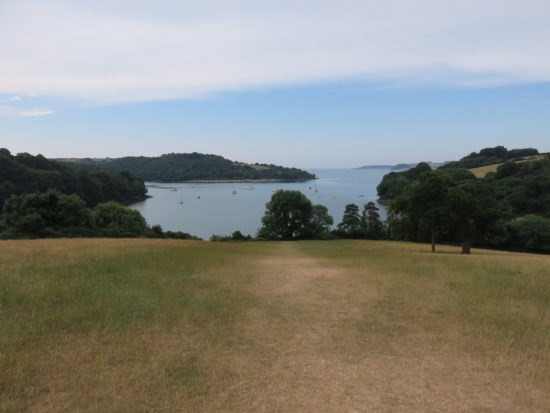
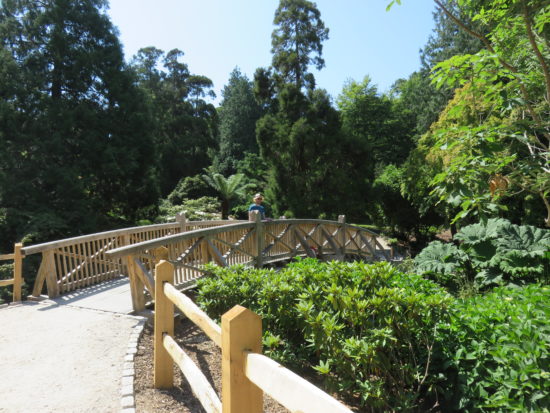
Eventually, we returned to visit the very large and stunning gardens, and then after a quick cake stop at the cafe, to the house. The house is perfectly situated, with views out to the river. Unfortunately, only the downstairs was open when we visited (something to do with the stairs becoming unsafe), but there was an interesting exhibition about Ida Copeland who was one of the earliest women to join parliament. It was a shame we had to leave, as we could easily have spent a whole day enjoying this extensive property, but our next scheduled stop was Lizard Point, which was about an hour’s drive away.
At Lizard Peninsula, there is a coastal path that runs between Lizard Point and Kynance Cove and there is a National Trust car park at each. However, the car park at Kynance is much smaller and becomes full during busy times. As we drove along the A3083, the National Trust staff had already placed a car park closure sign at the turn off, so we headed on to Lizard Point. We arrived in the nearby town of Helston and stopped for lunch at Ann’s Pasties (3 Beacon Terrace, Lizard, Helston TR12 7PB), which gets a lot of good reviews. They were good value, but I was disappointed with them compared to the pasties we had from The Cornish Bakery. I found the pastry too dry, and there wasn’t enough meat inside; it was mostly potato.
We drove down Lighthouse Road to get to the National Trust Lizard Point car park (Landewednack, Helston TR12 7NT) where there is free parking for members and pay and display for non-members. Make sure you turn off to the left when you see the car park sign, as they run a one-way loop to the entrance and exit of the car park. There are free toilets nearby. There is another very small car park further down the road at Lizard Point, but it gets very crowded and there is not much room to get in and out of it.
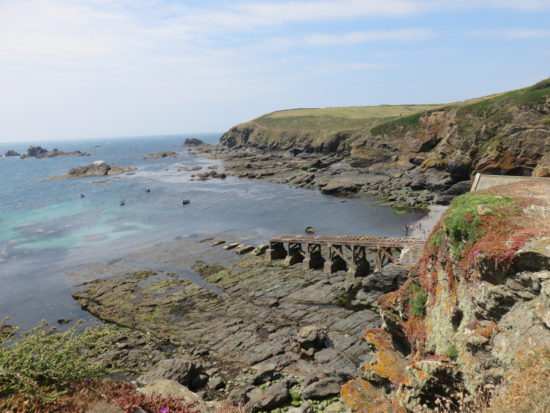
In the Lighthouse is a heritage centre, but you need to pay an entry fee to visit it. We headed down to Lizard Point, which, although it was a hot day, was surprisingly windy and cold. There are several cafes down at the point, a few shops, and a National Trust wildlife watch point where you can use their binoculars to spot the seabirds and speak to knowledgeable staff. After enjoying the views at the point, we walked the 2 miles along the beautiful coastal path to Kynance Cove. Along the way, we spotted a couple of dolphins frolicking in the water.
At the cove, there is a beach which is exposed when the tide is out, but the water is very rough, and it’s a very windy spot. Despite this, there were plenty of sunbathers trying to make the most of it. There was also a National Trust cafe here.
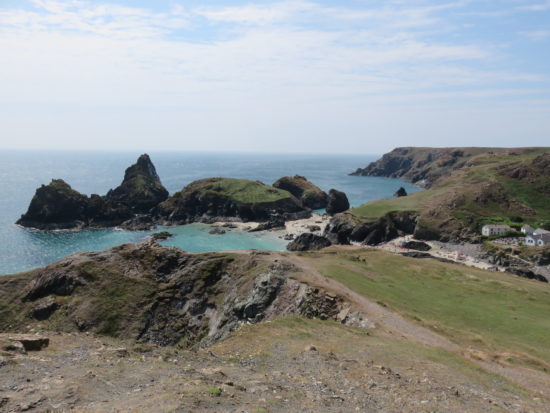
Other Optional Activities
- Hidden coves at Cadgwith village
- Trebah Garden (Trebah Garden Trust, Mawnan Smith, Falmouth TR11 5JZ)
- Pendennis Castle (Castle Dr, Falmouth TR11 4LP) Landmark hilltop castle with interactive kids’ exhibits and estuary views from the top of the keep.
- The coastal town of Falmouth
Day 4: St Michael’s Mount and Porthcurno
- Staying in: Surrounding area
Today we were visiting St Michael’s Mount, a castle on a small island just off the town of Marazion. The castle has been home to the St Aubyn family since about 1650, however, in 1954, Francis Cecil St Aubyn, 3rd Baron St Levan, gave most of St Michael’s Mount to the National Trust. The family retain a 999-year lease to remain living here and a licence to manage the public viewing of its historic rooms. There is also a small population of about 30 people that live on the island.
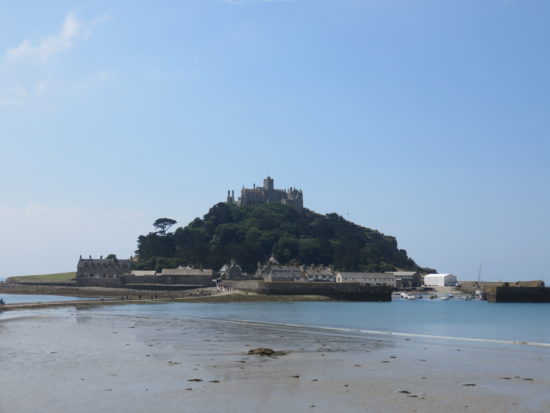
You can get to the island either by walking across the causeway, which opens during low tide, or by paying a small cash fee for the short boat ride across (weather dependent). When we arrived, the tide hadn’t completely gone out yet, although some brave souls were wading through the cold water. While we waited for the water to retreat, we took a wander around the small coastal town of Marazion and then popped into the lovely Chapel Rock Cafe (Kings Road, Marazion TR17 0EJ, England) for a hot drink and some yummy cake. The upstairs seating area has lovely views of the harbour and castle, so we could watch the tide go out. As we left, I was surprised to find the actor Sam Palladio waiting for a coffee, but I was too shy to ask for a photo.
It was another lovely sunny day as we headed across the causeway. It only takes about 10 minutes to walk across to the island. In ancient times, it wasn’t an island and was connected to the mainland. In the small gallery at the castle, there is a painting that depicts what it would have once looked like. It was covered in forest, and apparently, old tree stumps can still be found when the water goes out.
Once we arrived on the island, we walked down towards the castle entry point and ticket booth on the right across from the harbour. Along the way is an interesting exhibition which provides information about the history of the castle, the Aubyn family and also stories of the current families who live on the island. It provides an insight into island life, including the challenges of getting to the mainland each day to get to work and the kids to school. Bad weather can trap them on the island for days at a time.
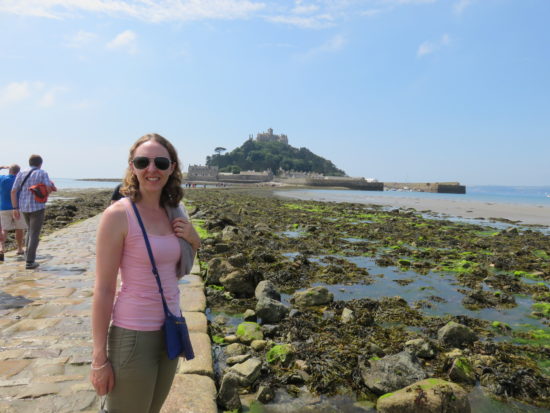
We are National Trust members, so entry was free for us, but otherwise, you need to purchase a ticket before heading up to the entrance. The cobbled path up to the castle is quite steep, but once at the top, we were rewarded with stunning views of the Cornish coastline. We headed in to explore the interior of the castle. The rooms are steeped in history and full of antiques collected over many generations. There are information plaques and staff in each room that are keen to share the secrets of the castle with visitors.

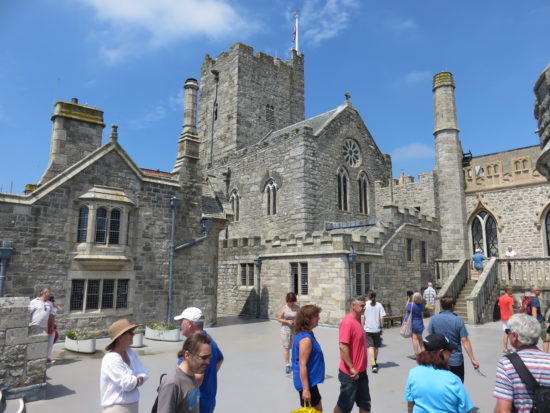
Halfway through, the path takes you out onto a large terrace where you can walk all the way around enjoying 360 degree views of the oceans and coastline. This is also where the 12th century priory church is located which is still used for Sunday services. We then headed back into the castle and through more rooms, including one of my favourites, the Garrison. Here we found a little museum full of interesting items collected by the family over many generations, including a full Japanese Samurai Warrior outfit.
Tip
- Park in Marazion’s Folleyfield Car Park (cash only). There is the slightly closer Slipway car park, but it is more expensive.
- Entrance to the castle is free for National Trust members, although you will need to pay for the car park (as above) and if you take the boat across.
- St Michael’s Mount is not open on Saturdays, so plan your trip accordingly.
- The gardens are very fragile, so they are only open a couple of days a week to protect them. However, you do get to see them from the castle terrace.
- We got lucky with the weather, but the island is very exposed, so it can get cold and windy.
- Wear comfortable walking shoes, the causeway and island are cobbled
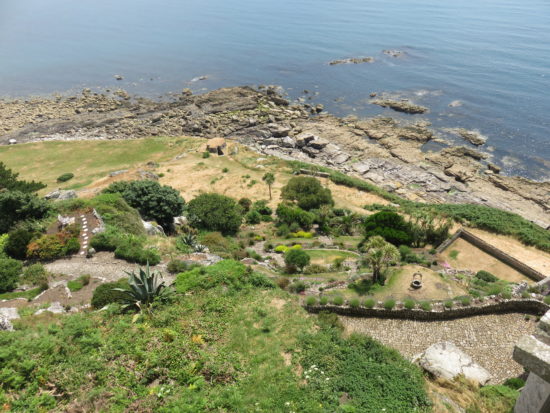
After leaving the castle, we headed back down to the island village area to wander around. There is a tourist shop and also a cafe with clean, free toilets. Eventually, we headed back to the mainland and walked across the expansive beach that had been revealed as the tide went out.
Our next location of the day was Minack Theatre in Porthcurno (Porthcurno, Penzance TR19 6JU, England). The road to it was better than I expected, except the steep hill up to the car park, but there are mirrors on the turns which make it easier to see oncoming traffic. There is pay and display car park by Porthcurno beach, but we parked at Minack Theatre as it was free and we planned to visit the theatre.
As we walked down to the theatre, we were faced with stunning views of Porthcurno beach with its aquamarine coloured water. We paid for entry into Minack theatre and visited the small exhibition which tells the history of this wonderful place. Minack theatre is an open-air theatre which was created by the extraordinary Rowena Cade and the help of her gardener, Billy Gardner. Together, they moved every piece of stone into place to create the theatre. I loved the story about how Rowena salvaged large beams of wood from a shipwreck. Keep in mind that by this time, she was an elderly woman and of slim build. She met some police on the beach who asked her if she knew what had happened to the wood. She told them that she had carried them up the cliffside to her property, but they didn’t believe that she could have done it, so she got away with it!

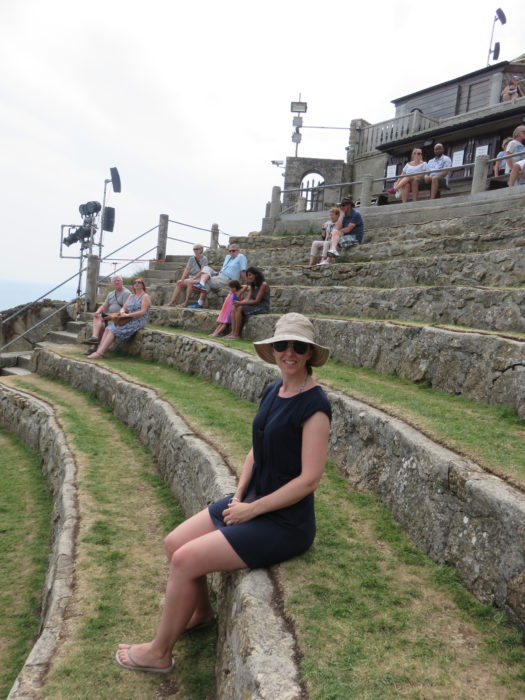
We then went out to explore the theatre. It is hard to believe that this was created by hand. You can book to see one of the many performances that they put on, but there weren’t any scheduled during our visit. However, some children were rehearsing for a performance, so we sat and watched them whilst we ate our lunch.
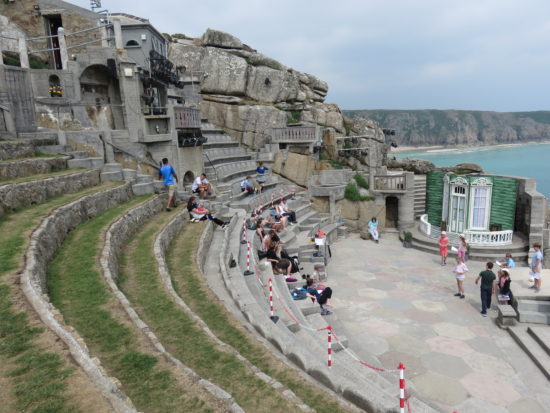
In the afternoon, we headed down the cliff to relax on Porthcurno beach, one of the most beautiful beaches in Cornwall. The water was so bright and clear, you could have easily mistaken it for Greece. If you don’t want to walk down the cliff side from the theatre, then there is a car park by the beach. This was an amazing place to spend the rest of our day. It was quite peaceful whilst we were there, but several weeks later, in the heart of the August summer holiday period, this beach became so busy that the council had to ask people not to visit. Apparently, this was due to it being featured in the popular TV series Poldark.
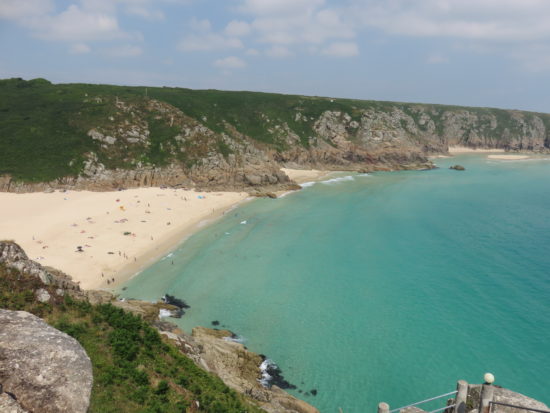
Other Optional Activities
- If you have time, then there are several other popular and picturesque coastal fishing towns to visit, including Porthleven and Mousehole.
Day 5: Penzanze to St Ives
- Staying in: St Ives
Today we planned to end up in St Ives, but first we had lots of sights to explore. First up was a quick stop in the stunning National Trust Trengwainton garden (fee applies for non-members) (Madron, near Penzance, Cornwall, Penzance TR20 8RZ, England). We then drove on to visit the ancient village of Carn Euny (Sancreed, Penzance, Brane TR20 8RB, England), which is managed by English Heritage. It is free to visit as there are no staff members manning the entry. A word of warning, though, the road is extremely narrow! Thankfully, it wasn’t too busy, but with rising fear, I noticed that everyone’s rubbish bin was out on the kerb and realised it must be rubbish day. I prayed that I wouldn’t meet the rubbish truck coming the other way. Thankfully, when I did later meet it, it was on our way back to the main road and the road had begun to widen. We discovered that they have few rubbish trucks here in order to get through the narrow roads!
Back to Carn Euny – we found a small car park where the road ended. From there, it was a short walk through a field to get to the site. I was actually surprised by how much of the village still remained, considering it was occupied from the Iron Age until late Roman times. There are foundations of stone houses from the 2nd to 4th centuries AD, with walls up to a metre high in places. My favourite part was a stone-walled underground passage, known as a fogou, which you can walk through.
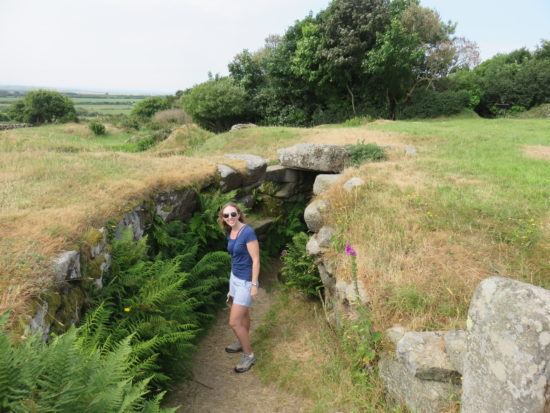

Next up was the famous Lands End (Sennen TR19 7AA, England), a very popular tourist attraction as it is the most westerly point of mainland England. As you drive in, you’ll need to pay an entry/parking fee. The attractions here are rather cheesy tourist fun fare style with some gift shops. There are also restaurants. We popped into the free museum, which had a very funny photographic timeline of people over the years making the trip from the top to the bottom of the UK on foot, bike, car and weird and wonderful contraptions such as a motorised toilet and a shed. My favourite was the guy who walked all that way naked, despite getting arrested several times along the way. Outside the main entrance is also a miniature village.


We headed out on the coastal path towards Sennen Cove. The views were stunning, and there were some interesting sights along the way, including the RMS Mülheim shipwreck from 2003 and the remains of Maen Castle. It was getting very hot by now, and we could see the beach of Sennen Cove beckoning us, so we walked down to visit the village and beach. If you wanted to save a few pounds, then the car park is cheaper here than at Land’s End, and you could just walk along the coastal path to it if you are reasonably fit.

Sennen Cove is a nice spot to stop for lunch and a swim. I loved the historic houses and buildings and was captivated by the round house that is also an interesting art gallery, where we found some stunning local artwork. After a swim, we headed back to Lands End and walked a short way along the other side of the coast. There were some local craftspeople who you can watch working in their shops and a pet farm, but from the coast, you can get a good view of Enys Dodnan, the arch that juts out of the ocean.
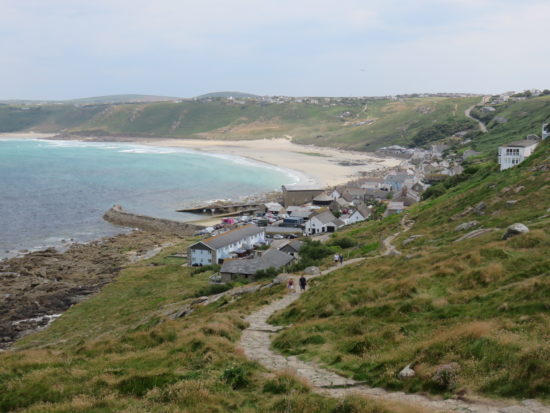
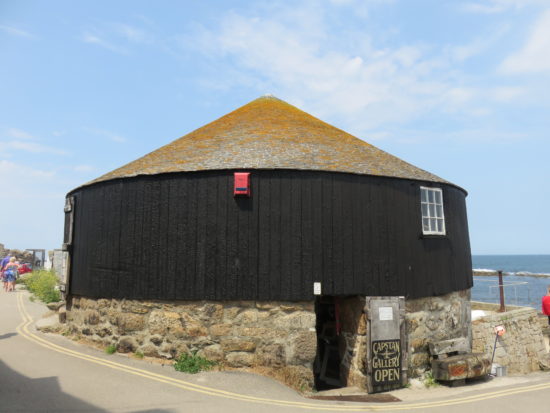
In the afternoon, we drove on to visit the Levant Mine and Beam Engine (Trewellard, Pendeen TR19 7SX, England). This coastline was once lined with mines, which inspired the popular TV show Poldark. This site is now owned by the National Trust so parking and entry fees apply (free for members). The road to it is good, only the last part just before the car park gets narrow.
To be honest, I thought this place was going to be boring, but it was interesting to learn about the harsh lives of the men, women and children who worked for many years at this mine. It was sad to read about the disaster in 1919 that killed 31 men. Outside, we visited the old arsenic pits, which sounded horrific to work in as they didn’t have safety gear, and the arsenic was very detrimental to their health. If you are interested, there is a more modern mine, Greevor Tin Mine (Pendeen TR19 7EW, England) nearby that has been turned into a museum. Ex-miners run guided tours of it.
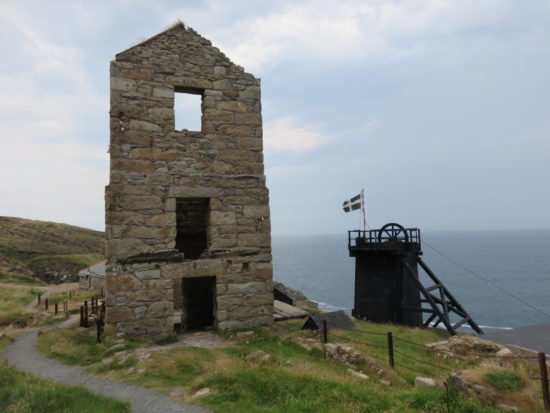
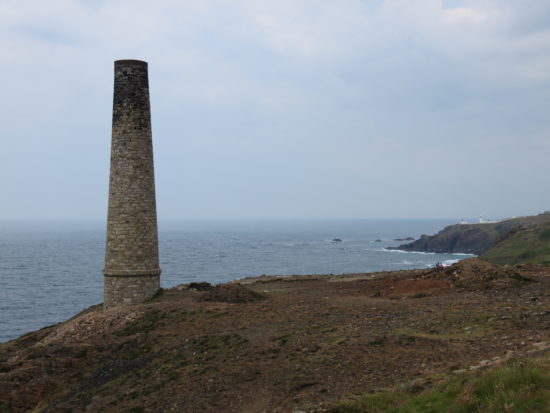
Even if you don’t visit the museum, it is a great spot to explore as there are lots of old buildings scattered around and a lovely coastal walk which you can take up to Pendeen Watch Lighthouse. Along the path, we finally got to see the elusive native Cornish Chough, a type of crow with a bright red beak whose numbers declined so much they disappeared for 28 years. They only began returning in 2001. We had heard them (they are rather rowdy as they fly around the cliffs in groups) and seen glimpses of them, but we finally got to see them up close as they landed on the cliffs in front of us.
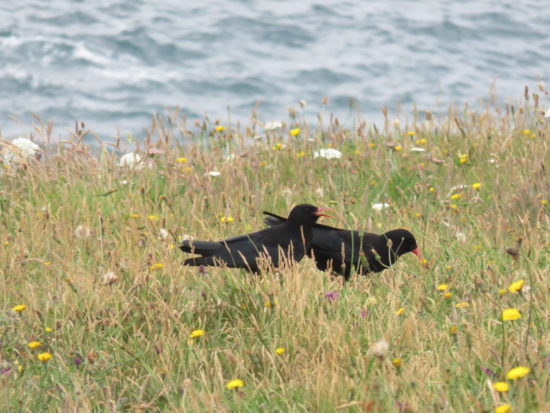
Our last stop before St Ives was Lanyon Quoit (Madron, Penzance TR20 8NY). A quoit (also called dolmen or cromlech) is a type of single-chamber megalithic tomb, usually consisting of two or more vertical megaliths (large stones) supporting a large flat horizontal capstone or “table”. Most date from the early Neolithic (4000–3000 BC), and historians don’t really know why they were made and what use they had. Surprisingly, Lanyon Quoit is not a busy tourist attraction. It sits quietly in a field by the road. It is very impressive and amazing to think that they assembled it so long ago and without machinery.
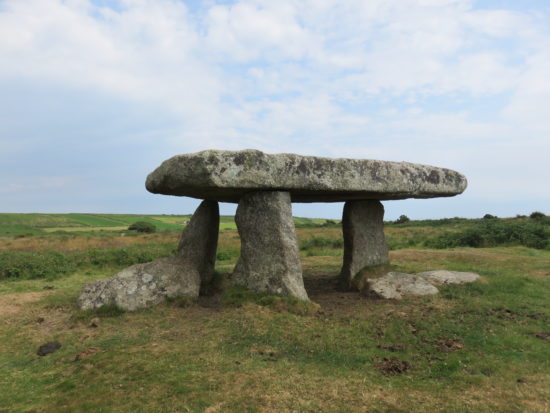
To get to it, just follow the directions on Google Maps. There is a very small sign by it, and it is easily missed, particularly when the roadside is overgrown, so drive slowly. There is no car park, but there is a little bit of space to pull over on the side of the road. There is a stone stile that you will need to clamber over to get to it. Cattle graze in the field so there is lots of poop! This sounds more complicated than it is, but I can assure you it is worth it.
This area is peppered with interesting ancient sites (all marked on Google Maps), including a couple more quoits:
- Mên-an-Tol (Near The Madron-Morvah Road, Madron, Penzance, England) – Ancient Bronze Age site including a rare holed stone, believed to have curative powers.
- Madron Holy Well (1/2 mile NW of Madron village, Madron, Penzance, England) – This place is revered for its magical and healing powers. There are strips of cloth, or clouties, tied to surrounding branches.
- Mulfra Quoit – This quoit is supported by three megaliths, but sadly the capstone has slipped off.
- Chûn Castle (Chun Downs Between Penzance and Trewellard, Fowey, England) – The remains of a large Iron Age hillfort (ringfort)
- Chûn Quoit (St Just, Penzance TR19 7TT) – This one has a closed chamber and a very large mushroom-domed capstone.
- Tregeseal Stone Circle (St Just, Penzance TR19 7PZ) – A restored stone circle.
- Boskednan Stone Circle Madron, Penzance TR20 8XX) – A partly restored stone circle, some of them are very large.
- Zennor Quoit (Zennor, Saint Ives TR26 3BU) – This quoit has unfortunately collapsed.
The B3306 is a busy but narrow road with lots of large tourist buses. We ended up getting stuck behind a slow bus, but the silver lining was that it forced all the oncoming traffic to make way. This is a lovely scenic drive.
After settling in at our accommodation, we headed out to explore St Ives. There is a train station in St Ives, so if you don’t have a car, you can get there by train. We headed out for a walk along the pier on Wharf Road, where all of the restaurants are. Unfortunately, this is not a pedestrian only road, and it gets very crowded with people, so I pitied those drivers who had to drive along here to get to where there accommodation. The roads around St Ives’ old town are very narrow. I was relieved that we weren’t staying in this area, as it would have been a rather terrifying drive.
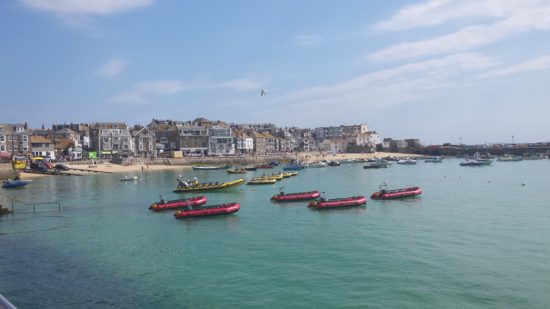
We walked along the coastline and on our way back, we stopped off for a drink at The Searoom (1, Wharf House, The Wharf, Saint Ives TR26 1PG). We enjoyed some local drinks, including a St Ives gin, a lovely Cornish Orchards cider and Harbourside St Ives Brewery ale. They also have a great cocktail menu. We ended up having dinner here, which included a large bowl of lovely fresh mussels. On our way back to our accommodation, we stopped off for some ice cream at Zennor’s Moomaid (1 Wharf Road, St Ives TR26 1LG, England) and got a large dollop of Cornish cream on top. I loved the Moomaid logo, which features a half cow/ half mermaid.


Day 6: St Ives
- Staying in: St Ives
It was another beautiful sunny day as we headed out to explore St Ives, which was bustling with tourists. At the Malakof bus station on The Terrace, we found a wonderful lookout over the town and coastline with seating and a small garden. St Ives has lots of beautiful beaches. We then headed down to explore the maze of narrow streets. We found baby gulls perched on rooftops, stairs, and windowsills waiting for their parents to return with food. If you live here, you must have to get used to your house being covered in gull poop!
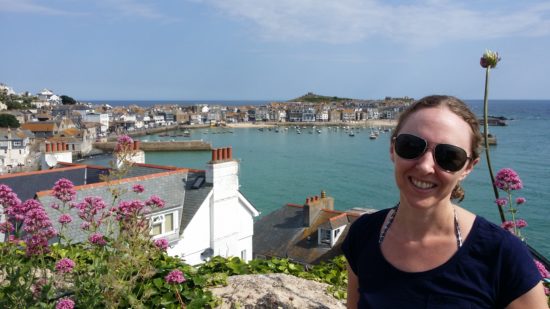
Fore Street has some lovely shops, but then we decided to explore off the main street and found ourselves in the midst of the vibrant art area. There are lots of little private galleries to enjoy, and they were all free to enter. The styles of artwork vary, as does the quality, but there are some good pieces to be found. If you are a fan of the famous artist and sculptor Barbara Hepworth, then there is a Barbara Hepworth Museum and Sculpture Garden (Barnoon Hill, St Ives TR26 1AD, England) displaying her works. She lived in St Ives from 1949 until she died in 1975. We are lucky to live near The Hepworth Wakefield (Gallery Walk, Wakefield WF1 5AW, England) gallery, where I fell in love with her sculptures.
We eventually found ourselves at the Tate Gallery (Porthmeor Beach, St Ives TR26 1TG, England), which has a viewing platform overlooking Porthmeor Beach. We headed out along part of the South West Coast Path, which provided views over the north side of St Ives. It was getting very hot by now, so we returned to relax on the wonderful Porthmeor beach.
In the afternoon, we walked to The Island, which isn’t actually an island, but is a grassy headland. If you have the energy to walk up the steep hill there is a lovely little chapel named after St Nicholas, who was the patron saint of sailors and children. It is not clear how long it has been here for (but it’s very old), and it has been restored several times.
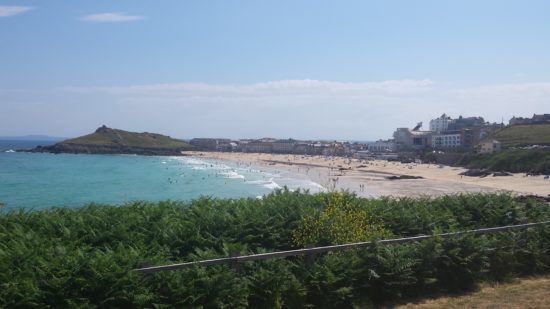

We headed back to St Ives harbour for some lunch at The Beachcomber Cafe (The Wharf, Saint Ives TR26 1PU). It doesn’t look particularly ‘trendy’ but the food was delicious and reasonably priced. We had planned to get sandwiches to eat on the harbour, but the staff explained to us that due to the badly behaved seagulls, the vendors had agreed not to provide takeaway food in an attempt to reduce the number of people eating on the beach (as it makes the seagull situation worse). The staff were lovely and got us a seat out the front facing the harbour, and we had some lovely fresh crab sandwiches.

In the afternoon, we headed to the beautiful Porthminster Beach, where we spent the remainder of our day sunbathing and swimming. All of the wonderful beaches in St Ives are patrolled by surf lifeguards and are clean, well maintained, and have toilets.
In the evening, we enjoyed dinner at Blas Burgerworks (19 Warren, Saint Ives TR26 2EA). This place is very popular but very small, so we went early to see if we could get in. The staff are good at juggling the tables, and they told us they could squeeze us in if we were willing to wait 30 minutes, so we headed out for an evening walk, where we witnessed the very aggressive seagulls attacking people trying to eat on the harbour, so be warned! The burgers at Blas Burgerworks were big and juicy. I liked the open kitchen where you could watch them create your burgers in front of you. The staff were very attentive and seemed to genuinely want you to enjoy your experience and food.
Day 7: St Ives to Padstow
- Staying in: Padstow

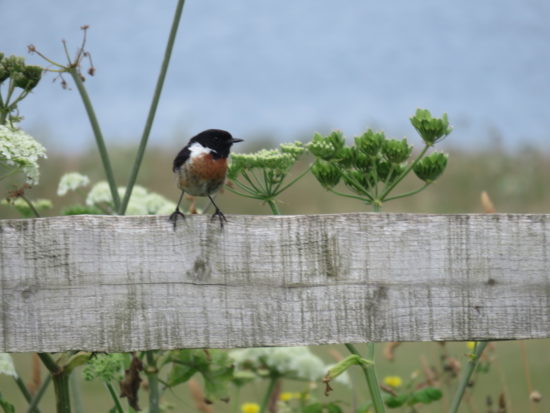
Today we planned to end up in the coastal village of Padstow, but before that we had lots of beautiful coastline to explore. It was our first grey day, but thankfully the rain held off. Our first stop was the National Trust Car Park (free for members) at Godrevy (Gwinear-Gwithian TR27 5ED). If you have limited walking capacity, then there are some small car parks closer by, just keep driving past the main car park. There is a small cafe here as well as a surf school that use Gwithian beach. We headed out for a walk along the stunning coastline to view the Godrevy lighthouse and the seal viewing point.
There were lots of birds amongst the wildflowers. When we first walked past seal viewing point, we didn’t see any, but on our way back, we saw 4 of them lolling about in the water and on the sand. They are quite hard to spot, so be patient and take some binoculars with you.

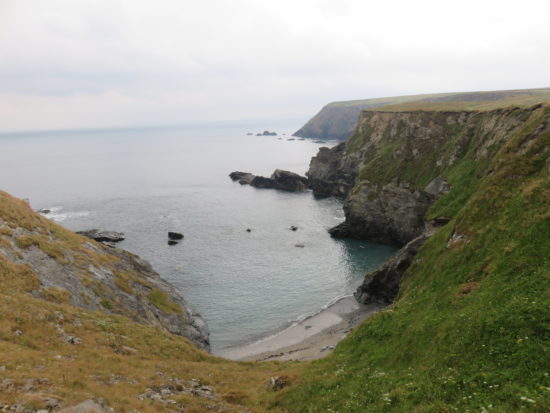
Our next stop was St Agnes Heritage Coast. We drove along the B3301 where there were lots of small car parks to pull over and enjoy the walking paths. We drove through the coastal towns of Portreath and Porthtowan until we got to the National Trust Wheal Coates Car Park. free for members (Beacon Dr, Saint Agnes TR5 0NU). The vibrant purple heather was in full bloom, and with the ocean as its backdrop, the scenery was breathtaking.
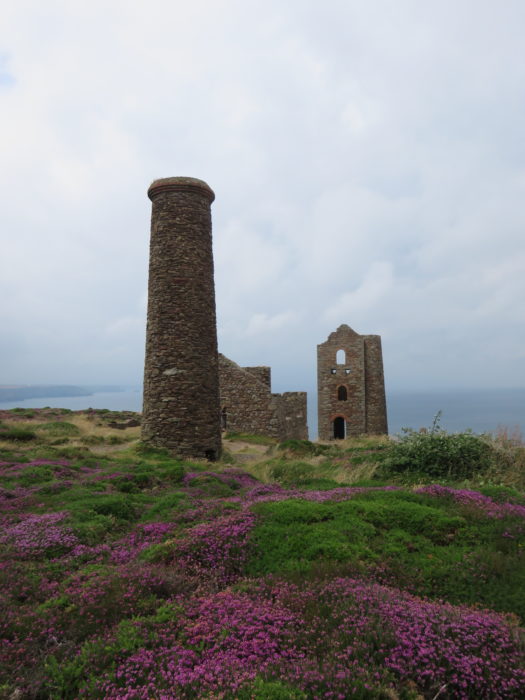
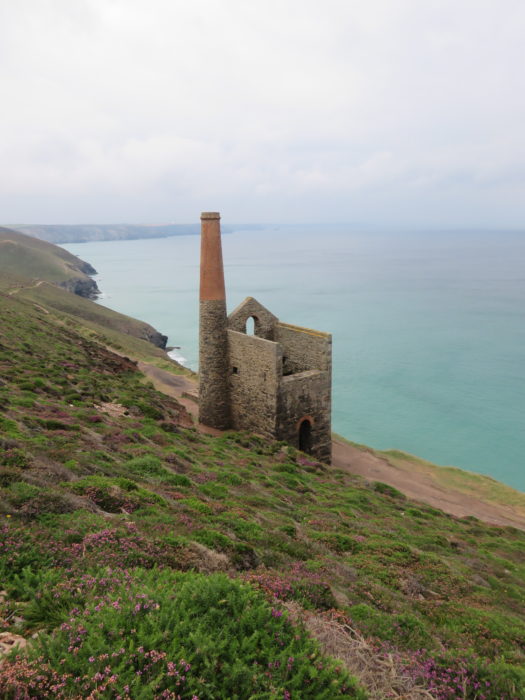
There are the remains of a former tin mine here called Towanroath shaft. We walked north along the coastal path to St Agnes Head, then turned back towards Chapel Porth Beach to get some lunch at the French inspired Chapel Porth Cafe (Chapel Porth Farm, Chapel Porth, St Agnes TR5 0NS, England). There is a National Trust car park here if you prefer to drive. The cafe serves the most amazing hedgehog ice cream, which consists of Cornish ice cream, covered in Cornish clotted cream and then rolled in nuts. The tide was on its way out, which exposed the beach caves, so we headed down to explore them. The caves were quite deep and covered in mussels and anemones. We watched as whelks slowly ate the mussels.
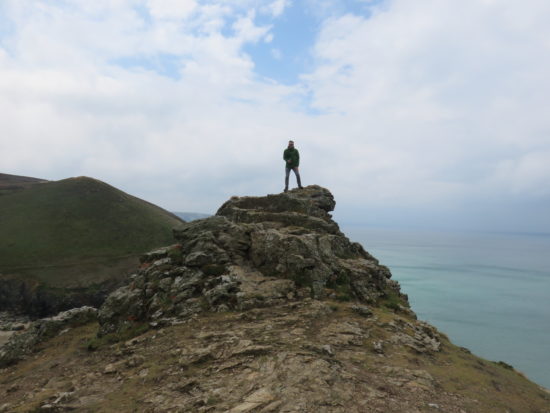
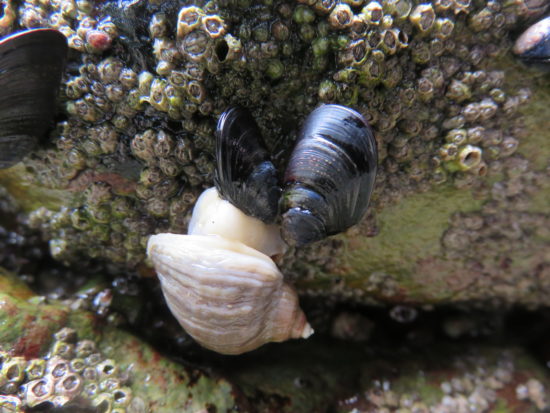
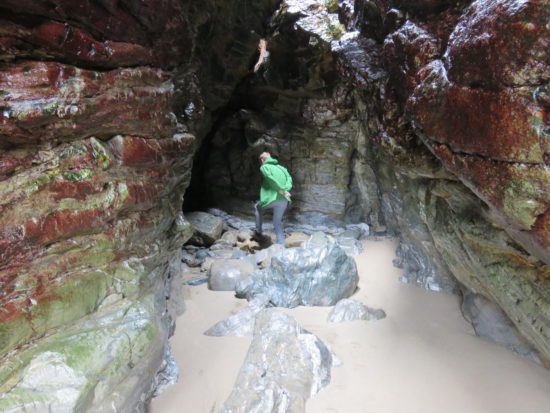
As we drove on to Bedruthen Steps (Bedruthan, near Padstow, Cornwall, PL27 7UW), we came upon a stoat dancing in the middle of the road. Apparently, they do this to mesmerise their prey, so it must have been attempting to kill something on the side of the road. It did look very cute. At Bedruthen Steps, there is a National Trust car park (free for members), a cafe, and toilets. This was once a mining area, and the cafe and shop are housed in the old stone mining buildings.
This place is amazing, a short walk from the car park reveals views of dramatic cliffs which look down to the beach with huge rock formations jutting out of the water. This place got its name from the legend of Bedruthan. Bedruthan was a giant who used the beach stacks as stepping stones to create a shortcut across the bay.
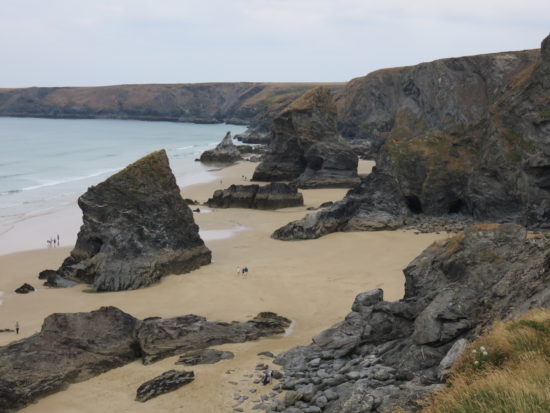
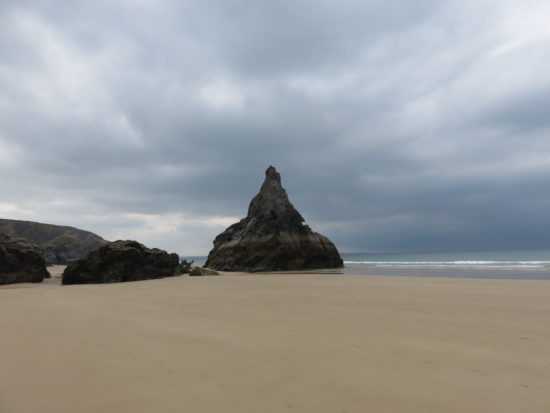
Thankfully, the tide was nearly out, so we headed down to get a closer look. There is a rather long set of stairs that takes you down to the beach. It’s not so bad going down, but it’s a killer getting back up again and once at the top of the stairs, you need to keep walking up the cliff side to get back to the car park. It is worth the effort, though, because walking amongst these huge stone stacks is an amazing experience. It made me feel like a tiny human in a land of giants.
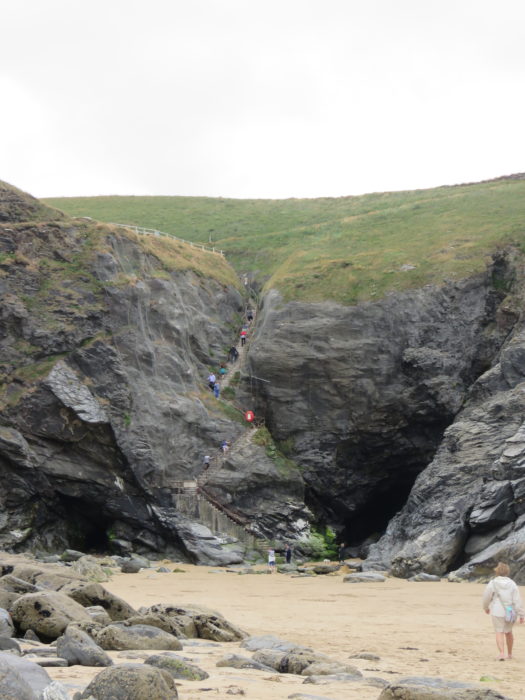
Tip
- When planning your trip to Bedruthan Steps, make sure you visit when the tide is out so you can walk down to the beach and walk amongst the huge rocks.
In the evening, we drove on to our accommodation in Padstow. Padstow is a lovely fishing village with lots of posh restaurants and shops. There is no beach, but there is a nice fishing port. If you head up North Quay Parade, it leads on to a park where there is a walking path along the coastline (it’s actually the South West Coast Path), which gives you a good view of the village and harbour. We had reservations at The Seafood Restaurant (Riverside, Padstow PL28 8BY, England), one of Rick Stein’s restaurants. The celebrity chef, restaurateur and television presenter has lots of restaurants, cafes, and fish and chip shops around Cornwall. In Padstow, he even has a homewares store. They actually use the kitchenware at the restaurant. I loved the water jugs with the fish themes.
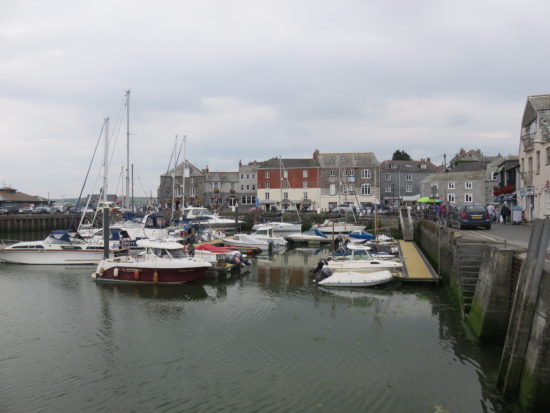
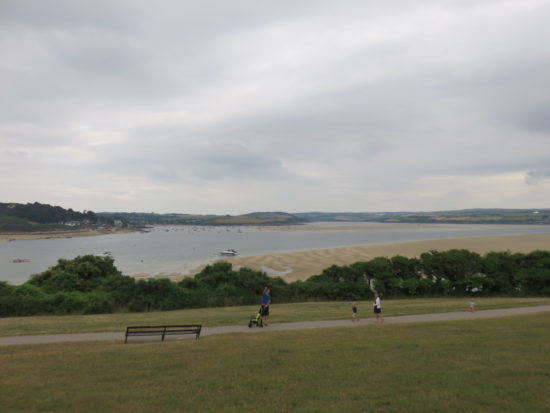
Dinner was delicious, but I have to say, I really hated the artwork on the wall, so much so that it was kinda distracting. The staff were also over egging the up sell to the point of making it feel uncomfortable. There was a good selection of seafood on the menu. I had the stuffed zucchini flowers and the Indonesian fish curry. I also liked the Rick Stein white wine we had with the meal. We didn’t manage to fit a dessert in, as portion sizes were good and it was very filling.

Day 8: Padstow to Exmoor
This was our final day in Cornwall. In the morning, we visited the quaint coastal town of Port Isaac, which has been used as a filming location for a variety of TV shows and movies, including the popular British TV shows Doc Martin and Poldark. I fell in love with this place while watching Doc Martin. Part of the reason I watched the show was just to see the stunning shots of ‘Portwenn’. There is no parking in this little village, so you need to park at the Port Isaac Main Car Park (B3267, Port Isaac PL29 3TR), which is about a 10 minute walk from the village centre. I wouldn’t advise driving down to the village as it is a very narrow and winding road with few places to turn around. It’s also supposed to be two way, but I don’t really know how two cars would be able to pass. It’s a downhill walk to the village, so an uphill on the way back! As we had arrived early, the car park was pretty much empty, but it apparently gets busy during the August school holiday period.
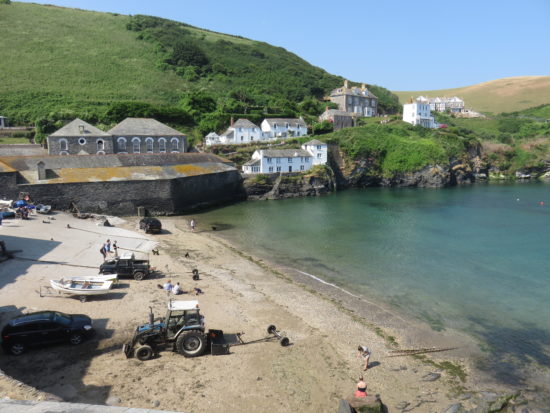
Port Isaac did not disappoint, in fact, I think it is even more beautiful in person. It was a lovely sunny day and the water in the harbour looked crystal clear and inviting. If you are a fan of Doc Martin, then look out for the information board on your right as you arrive in the village. It points out the buildings used in the show. Right beside the sign was the building used as the schoolhouse on Doc Martin. It’s now a hotel and restaurant.
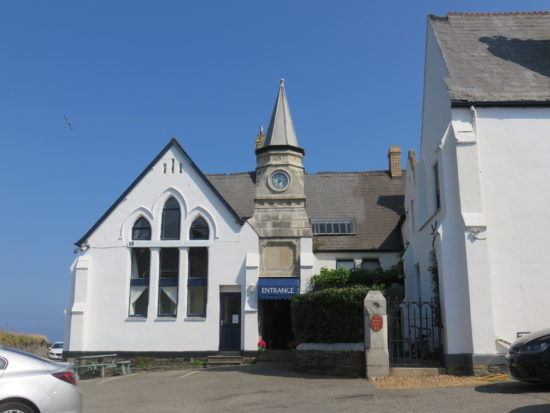
As we walked down the narrow village road, we noticed big curves carved into the side of the stone buildings. We read about how they had to do this to get the lifeboat through. In the village you can find several cafes, restaurants and some tourist shops.
On the other side of the harbour on Rocarrock Hill, is the home used as the doctors clinic and the Docs home in the TV show Doc Martin. It is now used as a holiday let, but you would need to be prepared to have tourists taking photos all day long.

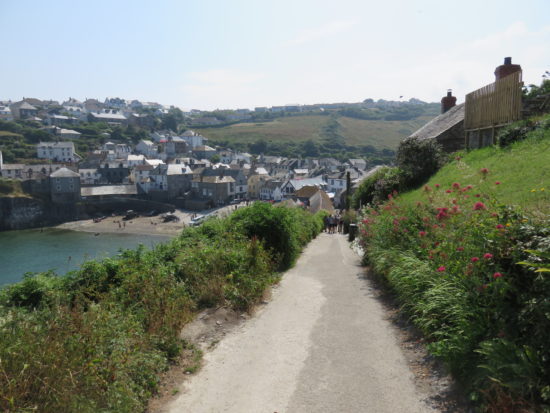
Our next stop was the famous Tintagel Castle, which sits perched on the cliff side of Tintagel Headland. Steeped in the legend of King Arthur, this place was so amazing that I decided to dedicate an entire post to visiting. Even if you are not interested in the King Arthur side of it, this place is breathtakingly beautiful and mustn’t be missed, so please read my detailed guide to visiting Tintagel Castle.

Following our visit to Tintagel Castle, we continued up the stunning Cornwall coastline to Boscastle, a picturesque historic fishing port. Much of it is actually owned by the National Trust, but there are no entry fees. There is a large car park in the town centre called Cobweb car park. It isn’t run by the National Trust, but the parking is cheap and is operated by pay and display. Boscastle isn’t large and is flat so easy to get around by foot. The cottages here are adorable and there is a nice National Trust cafe in an old church with an old wavy roof.

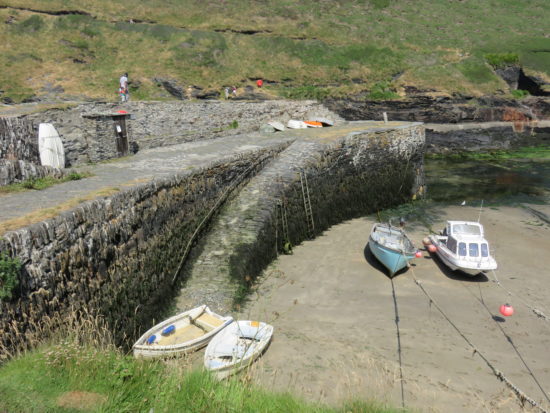
It had been an incredibly hot day, so by now we were hanging out for a cooling swim. We drove on until we found a nice beach at the village of Crackington Haven. There are two lovely cafes with the beach across the road. There is a large, cheap car park and toilets where you cross the road to get to the beach. The tide was out so it was a bit of a walk to actually get out to the sea, but once there, the water was actually much warmer than further south. As we wallowed in the water, we watched as two large birds of prey circled the cliffs.
In the evening, we drove on to our final destination, the beautiful Exmoor National Park in Somerset.
Practical Tips for Visiting Cornwall
- Money Saving Tip: Lots of sites, attractions and parking in Cornwall are owned by the National Trust. To save money, consider purchasing a National Trust membership.
- Language: English
- Currency: British pound
- Tipping: Not required, but people usually round up.
- Electricity: The electrical current is 230 volts AC. Wall outlets take a three pronged plug only used in the United Kingdom and Ireland. However, you are better off purchasing a worldwide adaptor that can be used in the United Kingdom as well other countries. At least then you can potentially get some further use out of it on future vacations. If you’re taking a number of electronics with you, then I would recommend purchasing a couple of these adaptors.
- Driving: In the UK, they drive on the left hand side of the road with speed signs in miles per hour (mph).
- Fuel: Fuel is expensive in the UK, so save money by downloading a UK fuel app so you can search for the nearest petrol station with the cheapest fuel.
- Navigating: We used Google’s free Offline Maps. Google Offline Maps allows you to access free maps for navigating that can be used offline, i.e. you don’t need WIFI, data, or roaming to be able to use them. Follow my detailed guide on how to use Google’s Offline Maps.
- Using your phone as a GPS will drain your battery quickly, so use a portable battery charger which you can use to charge your phone and any other USB chargeable devices.
- If you prefer a paper map, then purchase a road map before you go. At least it’s reliable and won’t run out of battery or malfunction like the electronic options!


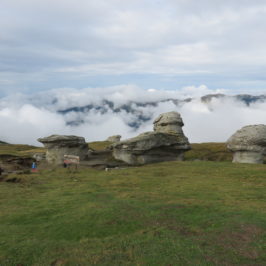


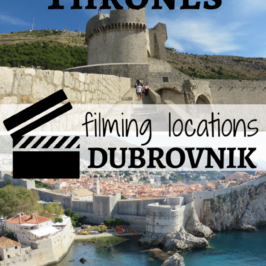
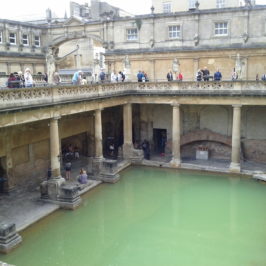
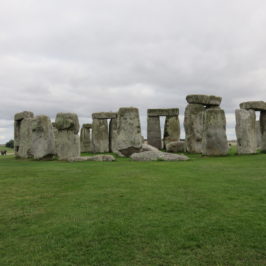
Peggy
This is fantastic! We’re visiting Cornwall in the fall & your info is so good. Theres nothing better than actual traveler experiences & tips. Thank you for sharing your wisdom.
Colleen
Thanks Peggy, I really appreciate your feedback. I hope you have a lovely trip. I am very jealous, I love Cornwall and hope to go back there to visit the parts I missed.